retired pediatrician, Rotary member
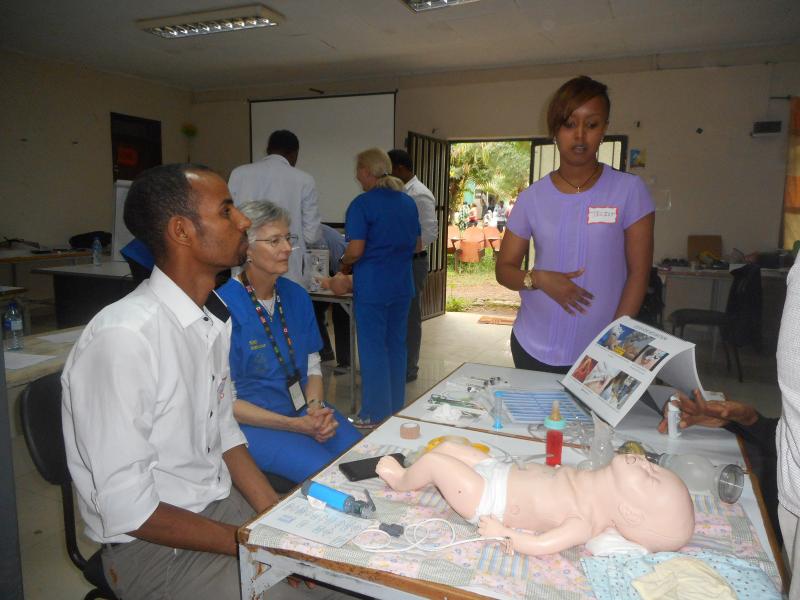
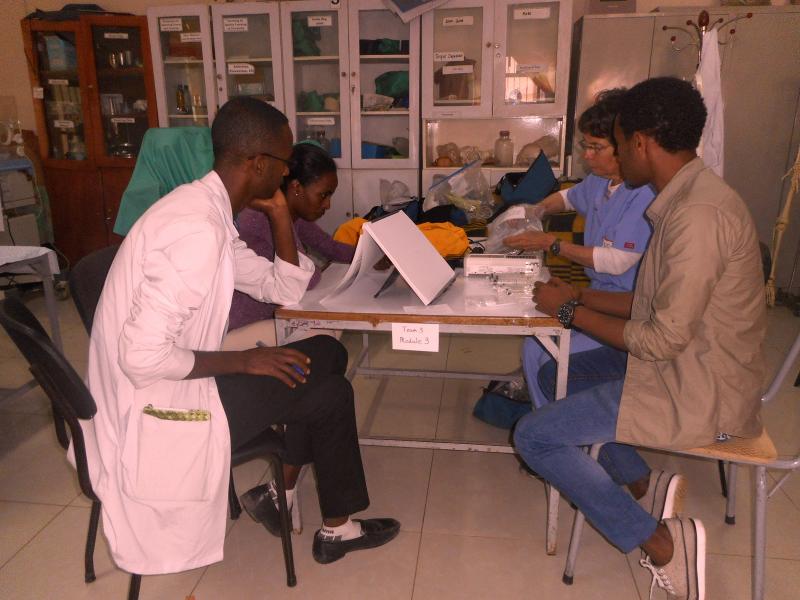
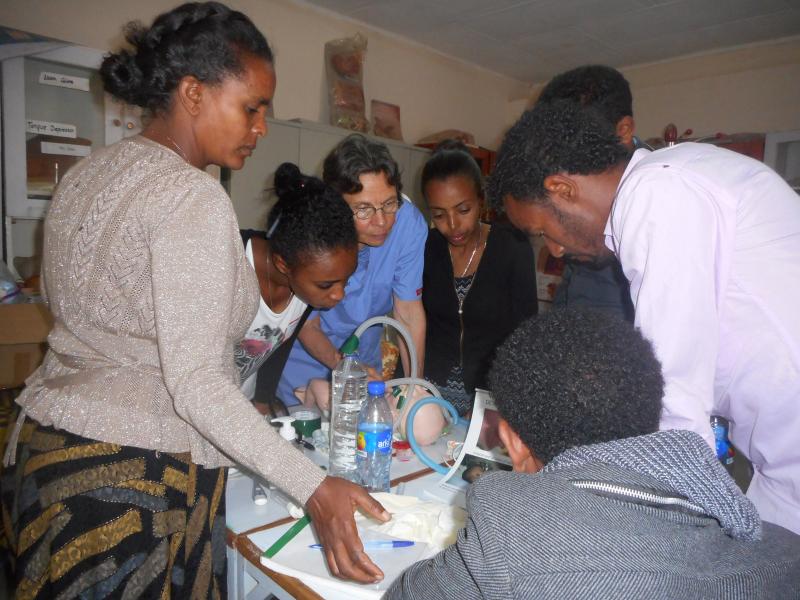
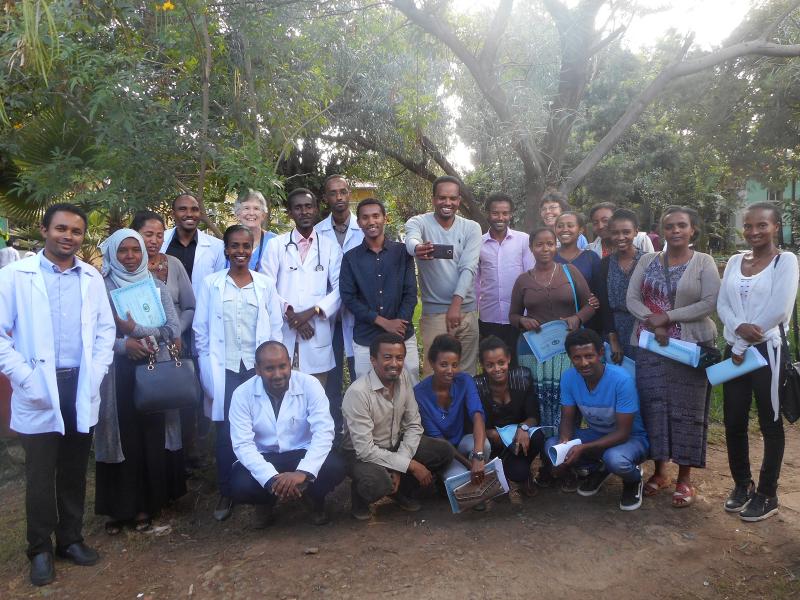
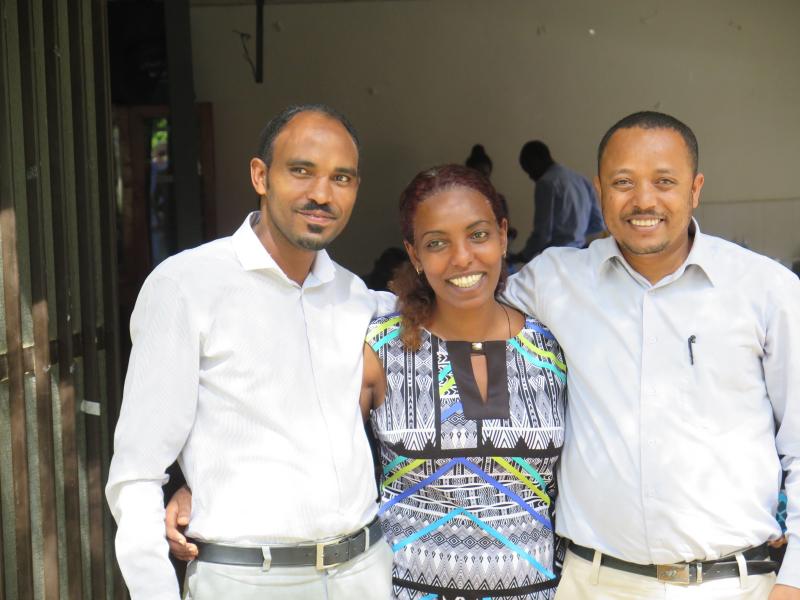
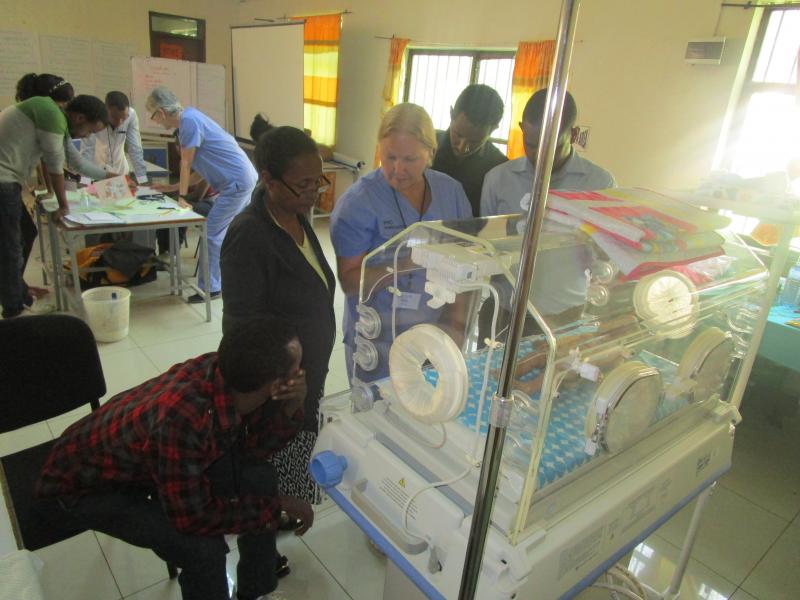
In 2012, after her parents had died, Davies and her two brothers took a trip back to Jimma. To their amazement, the small college they remembered had become a major university with 30,000 students. That trip got Davies thinking about how she might lend her medical expertise to the country that helped shape her.
“I felt such a huge connection to Ethiopia and the people there, and I wanted to do something to honor my parents’ memory,” she says.
At a breakfast with a group of friends, all retired female physicians, Davies shared her idea with Pat Bromberger, a neonatologist who had just returned from three months in Ghana volunteering in a neonatal intensive care unit (NICU).
“Let’s do it,” Bromberger said.
Davies began calling anyone she knew who had any experience in international relief work. Her neighbor Carole Leland had worked in Ethiopia as a leadership development trainer with USAID, and the people she knew there recommended they talk to Zemene Tigabu, then chair of pediatrics and now clinical director at the College of Medicine and Health Sciences.
“Karin followed up on every contact that I gave her until she found someone who could help,” Leland says. “You can tell she really cares deeply about the country, and her commitment is so strong.”
Davies and Bromberger flew to Gondar, a city of about 200,000 in northern Ethiopia, at their own expense and spent a week doing a community assessment, meeting with Tigabu and other faculty members in the departments of pediatrics, obstetrics, nursing, and midwifery. The women had initially planned to teach Ethiopian midwives a set of simple steps promoted by the American Academy of Pediatrics called Helping Babies Breathe. But Tigabu told them that what he really needed was a full university-level training program for nursing and midwifery students. Nothing like it existed anywhere in the country.
The facility was very poor. Now everything is upgraded. My second boy was born 10 months ago, and it’s like a different hospital.
![]() Abiyot Tegegne
Abiyot Tegegne
Rotary Club of Gondar Fasiledes
They also learned that Tigabu had attended Jimma University, and so felt a connection to Davies’ family – and that he was a Rotarian. A new plan began to take form.
The Rotary Club of Del Mar meets in the parish hall of St. Peter’s Episcopal Church, which overlooks California’s scenic Highway 101 as it winds past a beach famous for its surfing. “It’s a small club but very, very active,” Davies says. “Everyone is so supportive.”
Davies spent months researching maternal health projects in Africa before proposing the global grant project. Peggy Martin, who was then international service chair for the Del Mar club, was impressed.
“I realized immediately this was something Rotary could do something about,” says Martin. Training local people to train others ensured sustainability, she adds.
Martin agreed to steer the project through the grant approval process, while Stephen Brown, a member of the nearby Rotary Club of La Jolla Golden Triangle who was then a Rotary Foundation trustee, lent his expertise to help secure matching funds from clubs and districts. “When I saw Karin and Pat’s credentials and experience, and the connection Karin had with Ethiopia, I felt this project had a very high probability of being successful and having a meaningful impact,” says Brown.
In April 2018, almost a year after the fourth training team trip, the team members gathered at Davies’ invitation for an informal reunion. They had grown close over the two years they had worked together, the result of sharing typical travel misfortunes such as lost luggage and rooms without showers, as well as of their shared respect and admiration for what Davies had set in motion.
“I’ve done some medical missions before that were really wonderful, but they didn’t move me the same way Ethiopia did,” said respiratory therapist Kathy Johnson.
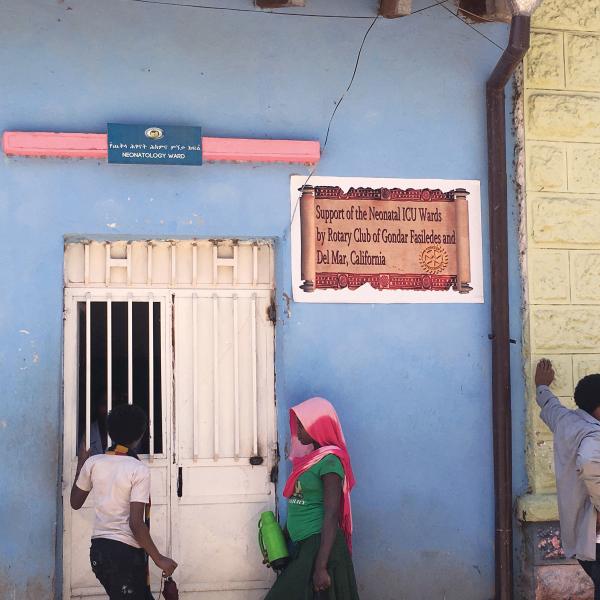
Community assessments: Evaluating the needs of a community is an essential first step in planning an effective project. Not only do assessments lead to projects that have the most meaningful impact and are the most sustainable, but the process builds valuable relationships, involves residents in decisions that will shape their communities, and encourages them to participate in making lasting improvements. Any club or district that applies for a global grant to support a humanitarian project or a vocational training team must conduct a community assessment first. The club or district should complete the Global Grants Community Assessment Results form (posted on My Rotary) and upload it with the global grant application, found in the Grant Center. You can use district grant funds to conduct the assessment, and Rotary’s Community Assessment Tools has ideas and proven methods for assessing a community’s assets and needs, including community meetings, surveys, interviews, and focus groups.
Emilie Jean, another respiratory therapist and the youngest member of the team, talked about an experience that illustrated the challenges the team faced. She was setting up a CPAP, a device that combines room air with oxygen from a tank, when physicians brought a baby who was struggling to breathe into the nursery. At first, the baby responded well. But then the tank ran out of oxygen.
After that, Jean recalls, the infant stopped breathing. “We were never able to get the baby back up,” she says. “The lack of resources was frustrating.”
But in the face of such difficult conditions, the hospital staff impressed the team. Davies recalls going on rounds with the doctors and nurses. “We listened to them as they went to each baby,” she says. Although the Gondar NICU is not well-equipped in comparison with Western hospitals, she says, “they are doing the very best they can with what they have.”
Davies recalls visiting a nursery where babies were being kept warm with space heaters, even as several incubators in the room were not being used. Team member Elisa Imonti, an NICU nurse whom Davies describes as “probably the best biomedical engineer around,” discovered that the units weren’t broken, as had been assumed, but simply needed to be programmed. Imonti taught the staff to do that – and then discovered eight more units in storage.
“On our next visit, they had set up a full neonatal intensive care nursery with all of these isolettes,” says Davies. “They took what they had learned and ran with it.”
Davies feels confident the program will carry on beyond its first grant, which was sponsored by the Rotary Club of Del Mar and the Rotary Club of Gondar Fasiledes. Four Rotary clubs and two districts contributed $62,000 to the project, which received $45,250 from the Foundation to cover training, equipment, supplies, and travel costs. A second $42,000 grant to expand the reach of the program was recently approved.
The project surpassed all of its goals. The team trained 73 instructors, more than double the initial goal of 32 – and those newly trained instructors, instead of teaching the planned 12 classes over the course of the project, ended up teaching 30, in which more than 800 nurses and midwives learned the lifesaving techniques.
Saving mothers and children is one of Rotary’s six causes. To learn more, visit rotary.org/our-causes. For information on Rotary Foundation grants, visit rotary.org/grants.
Members of the Rotary Club of Gondar Fasiledes provided logistical support and served as liaisons to hospital staff. Fary Moini, a member of the La Jolla Golden Triangle club and part of the vocational training team, says that Tegegne, the former club president, in particular went out of his way to meet the team’s needs.
“Abiyot was phenomenal,” Moini says. “Every step of the way, every time we needed him, he was there. A lot of the team’s success is because of him.”
Tegegne ran a tourism company before civil unrest in his country forced him to reinvent himself as a purveyor of bottled water. He was excited, he says, when he heard the team would be tackling infant mortality, and formed a committee in his club to handle its end of the program.
“We have seen many improvements from the project,” says Tegegne, whose daughter spent time in the Gondar NICU after being born prematurely in 2014. “The facility was very poor. Now everything is upgraded. My second boy was born 10 months ago, and it’s like a different hospital.”
Four times a year, Davies and other team members take part in a Skype conference with Rotarians and hospital administrators in Ethiopia. Kassahun Belachew, now chair of the pediatrics department, has taken over as course coordinator. During the final training team trip, Moini persuaded the three-person team in charge of the university tech center to help out with the Skype calls. Now, for about two hours, they have the best bandwidth available in northern Ethiopia.
“I think one of the most rewarding things is the relationships we have developed,” says Davies. “The Ethiopians are so committed and supportive. We are all friends on Facebook. We stay connected on a personal level, not just a professional one.”
Through Skype, Davies and the team are also working with Belachew, Tegegne, and others on a second global grant, which will provide financial support for the instructors to teach neonatal skills in regional health centers throughout the North Gondar region.
Davies says this project has strengthened her connection to Rotary.
“I’ve found my people,” she says. “Rotary allows ordinary people to do extraordinary things.”
• Read more stories from The Rotarian